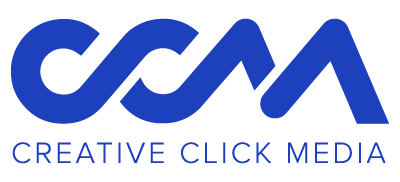In today’s digital age, local businesses must establish a strong online presence to attract and retain customers. A critical component of this online strategy is creating high-ranking local landing pages. Sometimes referred to as local SEO landing pages, these pages are tailor-made to capture the attention of a local audience by providing them with relevant information and a seamless user experience.
For businesses looking to boost their local search engine visibility and engage more effectively with their community, understanding the art and science of creating effective local landing pages is essential. Question is, where do you start? Let’s delve into the key elements that make a local landing page successful to ensure your page not only attracts local traffic, but also converts visitors into loyal customers.
Why do Local Landing Pages Matter?
Local landing pages are a key element of a digital marketing strategy for businesses targeting a regional audience. They serve as a bridge between your online presence and local consumers by offering a tailored experience that resonates with the specific needs and interests of your community.
For multi-location businesses, local landing pages are beneficial even with uniform products or services. They allow for the localization of content by addressing specific regional preferences or cultural nuances. For example, a hotel chain that welcomes visitors with a “Howdy!” on its Dallas location page may change it to “Aloha!” for its Maui location. This localization fosters a stronger community connection by immersing their website visitors into the culture of the area they will be visiting.
Think about it this way: A local coffee shop creates a landing page featuring specific references to its neighborhood, local events and customer testimonials. This focused approach makes the coffee shop more visible and trustworthy to potential customers searching for a “coffee shop near me”. This, in turn, is good for SEO, as Google views trustworthiness as a ranking factor.
Local landing pages are not just about being found online – they’re about establishing a meaningful connection with your local customer base. Both of these are vital for sustained business growth and success.

The SEO Benefits of Local Landing Pages
From an SEO perspective, local landing pages offer several key benefits:
Enhanced Local Search Rankings: Local landing pages are optimized with specific geographical keywords, making them more likely to rank higher in local search results.
Targeted Audience Reach: These pages cater to a local audience, improving visibility among consumers in the specific region or city the business serves.
Improved User Relevance: By focusing on local needs and interests, these pages are more relevant to the user which can lead to longer page visits and lower bounce rates.
Higher Conversion Rates: As these pages resonate more with local users, they typically see higher conversion rates compared to generic pages.
Google Business Profile Integration: Local landing pages can be linked with a Google Business Profile, which further enhances local SEO efforts and provides key business information directly in search results.
In summary, local landing pages are a crucial tool in a local SEO strategy that significantly enhances a business’ visibility in local search results. They provide content tailored to a local audience, which leads to improved engagement, higher relevance and increased conversion rates. This targeted approach is essential for effectively reaching and resonating with regional consumers.
Checklist: 15 Key Elements of a High-Ranking Local Landing Page
Now that we’ve covered why local landing pages are important, let’s take a deep dive into how to create local landing pages that are optimized to rank well:
✅ URL Structure
URL structure is crucial for the effectiveness of a local landing page’s ranking power. It helps search engines understand the page’s relevance and improves user experience by providing clear and intuitive navigation. For local businesses, including location-specific keywords in the URL can greatly impact local search rankings. For example, a landscaper offering commercial services in Houston might use a URL like “yourbusiness.com/commercial-landscaping-houston”. This URL clearly indicates both the service and location, making it more likely to show up in searches for commercial landscaping in Houston. This targeted approach increases the page’s visibility and accessibility to its intended local audience, thus enhancing the overall likelihood of attracting local customers.
✅ Page Title
The page title is a vital component in crafting effective local landing pages, serving as a primary content indicator for both search engines and users. A strategically crafted page title incorporates local keywords and succinctly describes the business’s services. For instance, a high-end hotel in Seattle might use a page title like “Luxury Hotel in Seattle | Experience Unmatched Elegance”. This title effectively informs search engines and potential guests about the specific service and its location – a one-two punch that will improve the page’s ranking in searches for luxury hotels in Seattle and enhance the likelihood of attracting visiting customers.
✅ Meta Description
Meta descriptions serve as a snapshot that entices searchers to click on your link to learn more on your website. While it’s important that your meta description is engaging enough to earn a click on a highly competitive SERP, it’s equally important that it includes local keywords targeted for SEO. For example, a gourmet restaurant in New York City may use a meta description like “Experience award-winning cruising at the finest gourmet restaurant in New York City and embark on an unforgettable culinary journey“. This description not only appeals to potential patrons with its enticing overview (A culinary journey? We’re in!) – it also strategically incorporates the keyword “gourmet restaurant in New York City”. Ranking for this keyword will enhance its visibility in relevant search queries.
✅ Header Tags
H1 and H2 header tags are crucial in structuring content on local landing pages, guiding both search engines and users through the page’s content. The H1 tag, typically the page’s main title, should succinctly encapsulate the core offering with relevant keywords. For a Portland thrift shop, an H1 tag like “Unique Finds at Your Favorite Thrift Shop in Portland” directly aligns with the targeted keyword, “thrift shop in Portland.” Subsequent H2 tags can highlight specific aspects or categories of the shop, such as “Vintage Clothing in Portland” or “Portland’s Best Thrift Shop” thereby structurally organizing the content and reinforcing keyword relevance. You may even want to go further by introducing H3 and H4 tags to further structure your content in an easy-to-understand format. This clear hierarchy of information not only aids in SEO but also enhances the user’s browsing experience by providing an easily navigable layout.
✅ Local Keywords Integration
When you think about a local SEO strategy, you’re probably thinking about keywords. Integrating local keywords into your landing page content is essential for enhancing local search visibility. For a Denver-based hot yoga studio, incorporating phrases like “yoga classes in Denver” or “Denver hot yoga” signals to search engines the local focus of the page. This strategy involves seamlessly integrating keywords into engaging, informative content that appeals to the Denver yoga community. This careful placement not only boosts search engine rankings but also ensures the content aligns with the specific interests and needs of the local audience.
✅ Contact Information
Simply ranking well isn’t enough – you want your customers to be able to get in touch with you, and Google wants to see that too. Displaying clear and accurate NAP information (Name, Address, Phone Number) across the web is essential for local businesses. This information, alongside a well-maintained Google Business Profile, aids in your local SEO efforts by reinforcing the business’s physical location while also providing potential customers with the necessary details to visit or reach out. Prominently featuring this information and ensuring its consistency across the web ensures that customers can easily connect with the business, which ultimately fosters trust and reliability in the eyes of your target audience.
✅ Google Maps Integration
Of course you want your audience to be able to get in touch with you, but if you have a brick-and-mortar location, you’ll also want them to be able to easily find you. That’s where Google Maps integration comes into play. Embedding Google Maps on your local landing page offers a dual advantage: improving user experience and enhancing local SEO. Including a map not only helps customers locate your store easily but also reinforces your shop’s connection to the local area. This visual tool aids in navigation and instills a sense of locality, making the business more accessible to locals looking to visit your physical storefront.
✅ Customer Reviews and Testimonials
Incorporating customer reviews and testimonials is a powerful way to build trust and credibility when you create local landing pages. Showcasing positive experiences from local customers is more than just a marketing strategy- it’s a tool that significantly influences potential shoppers by offering social proof. When new customers see that locals have had positive experiences, it establishes trust and highlights the shop’s commitment to quality and service. These locally-sourced reviews and testimonials also provide rich, authentic content that search engines favor. This dual benefit of building trust and boosting SEO makes customer reviews and testimonials an invaluable asset for any local business striving to stand out in a competitive market.
✅ Optimized Images and Media
Optimizing images and media on your landing page is crucial for both user experience and search engine performance. This involves selecting high-quality, relevant visuals and ensuring they are properly compressed to maintain fast loading speeds. Alt text should be used to describe images accurately, incorporating relevant keywords where appropriate. This not only aids in accessibility for visually impaired users but also contributes to improved SEO. Additionally, incorporating engaging media such as videos or interactive elements can significantly enhance the user experience by keeping visitors engaged and encouraging them to explore more of what your business has to offer. Bonus points if you’re able to incorporate local-focused imagery on your landing pages, such as landmarks, community events, and of course, your storefront!
✅ Mobile Responsiveness
Did you know mobile devices make up more than half of all global web traffic? With the increasing use of smartphones for internet browsing, having a mobile-responsive landing page is no longer optional – it’s essential. A mobile-responsive design ensures that your local landing page looks and functions well on all devices and screen sizes to provide a seamless experience for users on the go. This is particularly important for local businesses, as many local searches are performed on mobile devices while your potential customers are on the go in your community. A responsive design not only improves user experience but also positively impacts SEO, as search engines like Google prioritize mobile-friendly websites in their rankings.
✅ Loading Speed
Consumers aren’t the only ones who will appreciate a quick loading local landing page – search engines will too. The loading speed of your landing page is a critical factor in both user experience and search engine ranking. Users are likely to abandon a page that takes too long to load, which can increase bounce rates and reduce the effectiveness of your local SEO efforts. In fact, 82% of consumers say slow loading times impact their purchasing decisions, and 36% are less likely to return to if a website takes too long to load. Optimizing images, minifying code and using page caching are some ways to improve your loading speeds, but there are many that should be implemented on a case-by-case basis. Fast-loading pages hold users’ attention better and are favored by search engines, making it a key consideration for local businesses looking to maintain a strong online presence.
✅ Call to Action Buttons
You know what they say in show business: Lights, Cameras, Calls to Action! Even if you aren’t in the business of show business, the call to action (CTA) buttons on your landing page is a pivotal element that users towards engaging directly with your business. For instance, a compelling CTA for a salon franchise located in Nashville might say “Book at our Nashville location!”. Not only does this guide users towards taking a specific desired action, but it also instills them with the confidence of knowing they are booking at the correct location. The strength and clarity of your CTAs are key in converting site visits into tangible business outcomes, making them an essential feature of effective landing page design.
✅ Social Media Integration
Including social media links on your local landing pages is a powerful way to extend the reach of your digital presence. These links not only facilitate easy access to your social media platforms but also encourage interaction and engagement with your brand on multiple channels. For local businesses, this is an opportunity to showcase their community involvement and local events to strengthen the connection with their audience further. Integrating social media also enhances an overall SEO strategy by creating a network of interconnected, active online presences. Google loves to see a vibrant and interactive online footprint, which integrating social media can provide. This interconnectedness not only signals active engagement with your audience but also reflects the richness and relevance of your content – two factors highly valued in SEO metrics.
✅ Schema Markup
Schema markup is a code that you can add to your website to help search engines return more informative results for users. For local landing pages, using schema markup for local businesses, events and products can significantly improve their visibility in search results. This markup aids search engines in understanding your content’s context by displaying rich snippets. These snippets are particularly valuable for local SEO, as they can highlight important information such as location, hours of operation and ratings directly in search results.
✅ Internal Linking
Last but certainly not least, internal linking involves linking to other pages within your website. On local landing pages, internal linking can guide visitors to additional relevant content, such as relevant local-focused blogs, product or service pages or contact information. This helps to both improve user experience by providing easy access to more information and distribute page authority throughout your site. From an SEO perspective, strategic internal linking aids in site indexing and can strengthen keyword relevance – both of which are important for improving your site’s visibility in search engine rankings.

Ready to Tackle Your Local Landing Pages Checklist?
Now that we’ve made our checklist of high-ranking local SEO landing page elements, the next step is clear: It’s time to start checking them off your list! We know it’s a tall order, especially with your already full plate. But letting these elements slide can mean watching your competition climb up in search rankings and win over your local crowd.
That’s where our team at Creative Click Media comes in. We’re experts in transforming your local landing pages into something that not only climbs the search rankings but also truly speaks to the needs and interests of your local community. Working with us means taking a weight off your shoulders, knowing your online presence is in capable hands. Ready to start checking off that list? Your winning local landing page strategy is only a click away – contact us to get started.













